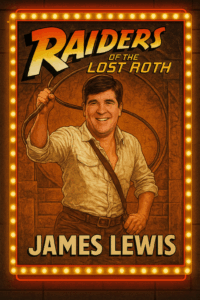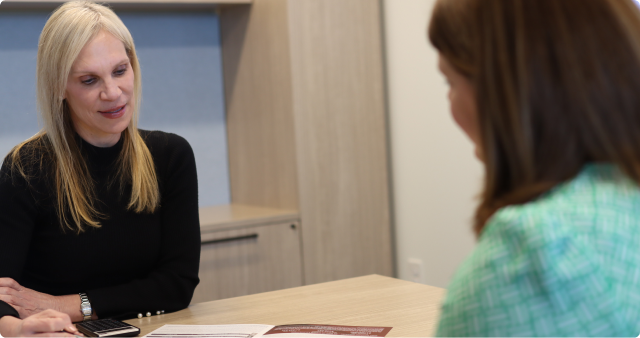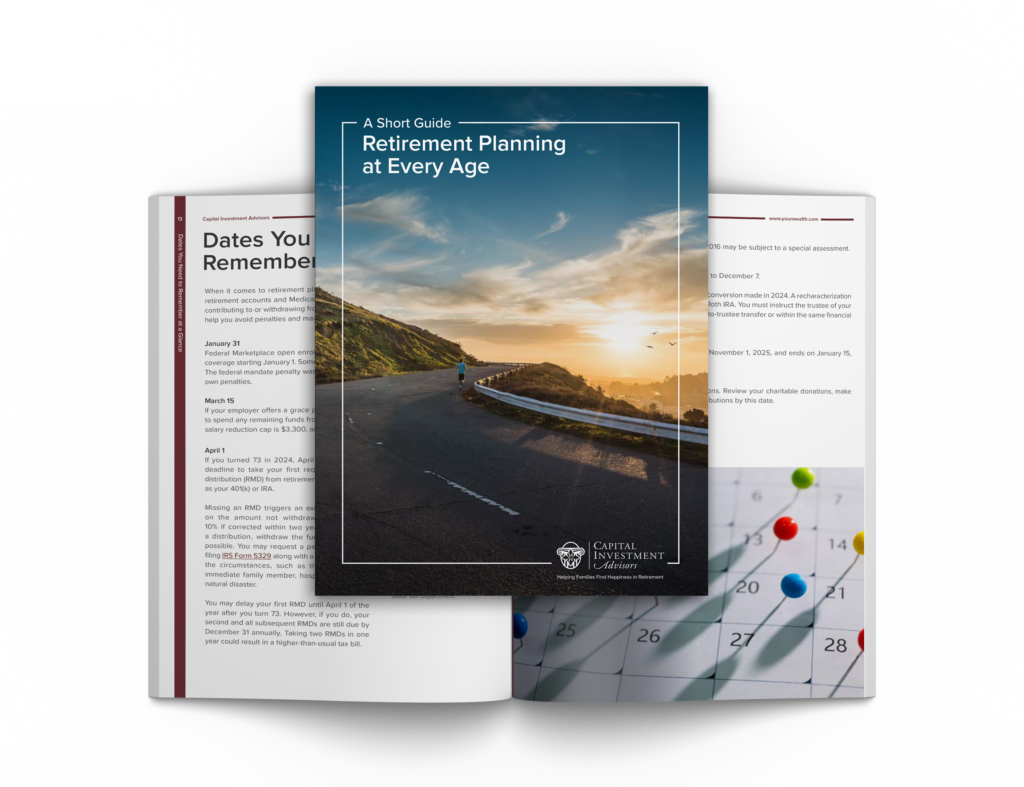Witness market volatility and the economic seesaw! Navigate the complexities of trade negotiations and their widespread impact. Untangle the inverse relationship between bond prices and interest rates. See how tariffs can affect prices and fuel uncertainty.
Harness the power of balance and diversification to help fortify your investments. Decipher the VIX (fear index) and its historical implications for market returns. Contemplate the lessons from the 2020 market crash and recovery. Analyze the details of ongoing global trade negotiations and potential outcomes. Note the influence of consumer and business confidence amidst tariff changes.
Marvel at the unchanging prices of egg salad sandwiches at the Masters Tournament and the hot dog/soda combo at a popular grocery chain. Tune in to the Money Matters Podcast, hosted by Wes Moss, Jeff Lloyd, and Connor Miller, to explore securing your financial future.
Read The Full Transcript From This Episode
(click below to expand and read the full interview)
- Wes Moss [00:00:02]:
The Q ratio, average convergence, divergence, basis points and BS Financial shows. Love to sound smart, but on Money Matters, we want to make you smart. That’s why the goal is to keep you informed and empowered. Our focus providing clear, actionable information without the financial jargon to help 1 million families retire sooner and happier, bigger. Based on the long running WSB radio show, this Money Matters podcast is tailor made for both modern retirees and those still in the planning stages. Join us in this exciting new chapter and let’s journey toward a financially secure and joyful retirement together. Wes Moss along with Connor Miller, Jeff Lloyd here in studio and gentlemen, what a week. Fasten your seat belts, throw on the bungee cord, jump down, almost hit the water, jump all the way back up, almost hit your head on the bridge and we’re back down, just an absolute bungee cord.Wes Moss [00:01:09]:
And I know last Sunday we talked about how this is this period of time with dramatic volatility around an event and uncertainty, of course, leading to great volatility. And it feels a lot like that period of time when we were in Covid and markets were cratering and the Fed was trying to do something and we saw big stock market declines, then huge upsides and then big declines. And eventually we settled out and I don’t know how quickly that’ll happen here, but we’re still in the, in this volatile world both up and down. Tom probably not out of the woods, but of course we also saw that historic rise on Wednesday, which I, I don’t know about you guys, but I took a snapshot on my phone just to remember what that up day was all was really like that rebound day. And the numbers were just eye popping. They’re historical really. The rebound we had on Wednesday was the third largest rise since World War II. Not, not every day you get a statistic like that.Wes Moss [00:02:14]:
So guys, where do you think we are? I’m going to start with who wants to start here?Connor Miller [00:02:18]:
CONNOR miller, I’ll just jump in and say, you know, this has been, this was one of those weeks, really. The last 10 days or so has been a period where you’ll look back in five years, similar to as we do with COVID where you remember where you were when some of the news broke or remember where we were on Liberation Day when the initial tariffs were announced and then when the 90 day pause was ultimately announced. Just days and moments that get ingrained in your head, just memories that you’ll have in the market.Wes Moss [00:02:53]:
Great turning points. Jeff Lloyd, you and I think it was Wednesday morning where we the market was, it was down not tremendously in the morning it was down significantly. And you and I were talking about the, the fixed income market. Right. So bond as a quick refresher. Bond prices and interest rates move inversely. So the seesaw, when people are bidding up bonds and going to buy U.S. treasuries, they bid up the price and the other end of the seesaw goes down and yields go down.Wes Moss [00:03:22]:
However, on Tuesday, Wednesday we saw yields go up, prices, prices going down. And that even this past week, or Kevin Hassett, who’s the National Economic Council, he, you could tell he was trying to not admit that that was one of the catalysts for the pause, but he clearly was. He said yes, that created a little bit extra urgency to see the, the bond market start to sell off a little bit. But you and I talked about that on Wednesday morning and then lo and behold, what were the timestamps? There’s so many different things that just that have happened this week. But Wednesday was one of the more fascinating days I can remember in 25 years.Jeff Lloyd [00:03:59]:
Yeah, there was a timestamp at 9:37. We had a post from the administration that said now is a good. And you know, around the office we were kind of like, okay, wait a minute. You know, that’s kind of interesting. You know, let’s, let’s think about this a little bit more. And then a couple of hours later that afternoon at 1:18pm you’re going by.Wes Moss [00:04:20]:
The minute, you’re going by the minute.Jeff Lloyd [00:04:21]:
Here we got another post that said, you know, authorizing a 90 day pause on reciprocal tariffs. And that’s when the market was really embracing the news that I think it had been waiting for these past couple of days, weeks and months of okay, maybe cooler heads are going to prevail. Let’s get back to the negotiating table. Let’s try to step away from this tariff tantrum or tariff war going on and maybe get back to the negotiating table. And what did you see from the stock market? You saw an historic afternoon in a historic day in the market being up 9 and a half percent in one trading day.Wes Moss [00:05:01]:
Right. However, we know we’re not out of the woods yet because then the very next day markets cratered again. And we seeing multi percentage point moves in any given day. And, and you have some information around the vix. But it’s funny, as I go through this and we’re trying to sort this out, I go back to the fact that we are still in, we were in a period of maximum uncertainty. Let’s call it last week because we didn’t really even hadn’t really heard much about the negotiations yet. I’d say that the dense fog of uncertainty is a little less dense. We absolutely know for sure that this is a giant negotiation.Wes Moss [00:05:40]:
I was dropping off one of my kids at school this week and or a couple of my kids and one of them asked who are the tariffs we’re at war with? Who are they? Are they people? Like where, what’s, where are they from? And I said, look, I said the tariffs are not people but they obviously affect people. And those are, they’re essentially taxes that we put on goods from other countries so that their goods, other countries are more expensive and we buy more here. That’s the whole point of it. It’s a lot more opaque than that because the question is in the Amazon CEO Andy Jassy this week was talking about how who’s going to pay for the tariffs, who’s going to pay and he said that you can make the case that the producer on the other side, they eat it and they drop their price by a certain amount and eat part of the tariff. And he just said the opposite. He said no, that cost is going to come through and it’s going to be higher prices in the United States. So it’s not the chain of goods production from making it in another country to shipping it for a month or two overseas, to bringing it into the port to then getting it to the stores. There’s a lot of decisions that need to be made along that and there’s no exact path it’s going to be different for not just every company, but every product from every company.Wes Moss [00:06:53]:
So there’s no way to really know that. What we do know is that and the reason I think we’re heading towards not necessarily solution but heading towards certainty and that’s really what matters. And I don’t know where the ultimate end game here is in the ultimate solution, but I do know we will continue to move closer to clarity. And we got a little bit of that this week and then we get clarity. I think you’ll start to see this market not necessarily go back to all time highs but the volatility to calm down. It’s not really that normal to stay in. I would say it’s normal because we’ve seen it lots of times in history, but you’re in an extraordinary type period when you’re getting plus 2, 3, 4% moves in any given day as if that’s normal and that’s heightened volatility. So that’s I think where we’re headed, I think that gives me confidence about the future is that, and we’ve had lots of discussions over this past week with, with our advisors that we don’t know today what the ultimate solution is.Wes Moss [00:07:55]:
But we do know we’re going to get closer and closer to clarity, because the ultimate lack of clarity is a headline. It’s a headline. It’s a state that is, has a lot of impact in the day you read the headline or the minute you read the headline. JEFF LLOYD but as time goes on, those headlines, they always fade and clarity starts to creep in. And that’s a good thing for markets. Investors just want to know where we are.Connor Miller [00:08:22]:
And I would make the case, and a lot of people have said this, that the reason you get these wild swings in the market and you get these forecasts of recession really is not just because of the tariffs, but really is related to the uncertainty. The tariffs in themselves, yeah, they have an economic impact, but it’s the uncertainty of businesses making decisions on where are they going to invest their capital. And then even consumers as well, they want to wait to find out, okay, how much is the cost of these goods that I can’t live without? How much are they going to go up? Do I need to make sacrifices? Do I need to save more? And ultimately, those are the decisions that end up leading to the economic impact.Wes Moss [00:09:04]:
And I would say, though, if I were to kind of summarize our thinking this week, is that of course the tariff turmoil is, that’s causing real investor anxiety, but it’s the lack of clarity around it. To your point, Connor, we’ve got tariffs now. We don’t even know if the 10%’s gonna stick, but we’ve got them from anywhere from 10% to well over 100%. And I think we were talking this past week, when you have a tariff, let’s call, let’s just say 150% tariff. To your point, it’s almost like making a bet for a gajillion dollars because it’s, it’s totally, it doesn’t even, it’s.Connor Miller [00:09:40]:
Not a real number.Wes Moss [00:09:41]:
Literally doesn’t make any sense. You can, it’s just shuts down everything. It’s a might as well be a.Connor Miller [00:09:47]:
Million percent at a certain point, whether that’s 30%, 50%, the cost of the goods become so uncompetitive that it’s just not realistic. Whether you get to 100% or 150%, you’re going to stop the flow of.Wes Moss [00:10:01]:
Goods diminishing Marginal stoppage per new percent increase. Right. A stop a flow at 100%. So it might as well be 200, might as well be 500. Doesn’t matter. Either way, there’s no trade happening. Which goes back to the thought around a trade war. I don’t think we’re in a trade war.Wes Moss [00:10:20]:
And I guess I get back to my conversation with one of my little guys is that, look, we’re not at war with people. Tariffs are not people, but they’re attacks that essentially we put on goods from other countries so that we buy more here. But at the same time, the media has continued to say trade war, trade war, trade war. I think this is a global trade negotiation. That’s what we thought last week. And it’s really come to pass now. The next phase of dense fog is we don’t know where the negotiations are going to come out. And so we’ve had this.Wes Moss [00:10:51]:
We’re in this supposed pause, but now it’s almost tariff purgatory for the next couple of months. So you’re going to continue to have uncertainty. We’re going to probably see more big down days and probably more big up days as the kind of the EKG of this earthquake, the tremors, start to kind of eventually calm down, which goes back to the solution for this, which really is important. And it’s so evident during times when the equity markets get really volatile is that balance and diversification are just so unbelievably helpful during periods of time like this. I love having a balanced portfolio, which means we have different asset classes. Not all asset classes move at the same time or in the same direction. And even though we’ve seen some jitters in the bond market, they’re up pretty significantly, most bond categories over the past 12 months. So that balance and diversification really helps.Wes Moss [00:11:47]:
What it also helps us do is not jump out of markets. And I know that it’s almost like we’re beating a dead horse to death on this one, but if you don’t end up having. You can’t sit through at least a percentage of your overall economic pie with the volatility that we see in the stock market, we know it will happen or continue to happen, then you might as well not invest in all, because if you do get out and you miss a day like a Wednesday, you miss these massive rebound days. And of course, we all know if you miss the rebound days, the big ones, your rate of return goes down just dramatically over 20 years. You miss the 10 best days over 20 years, your rate of return goes from 10 and a half percent down to 6. It’s dramatic. You might as well not even be an investor. And that, that also dawned on me this week.Wes Moss [00:12:32]:
It’s master Sunday morning. Jeff Floyd, you always bring in this inflation report, the menu from Augusta Masters inflation or lack of inflation. And the other thing about Augusta, I guess because there’s no phones, there’s, there’s no access to the Internet. So there’s no, so a buddy of mine that was there Wednesday thought there was something wrong when he turned his phone on on Wednesday, late afternoon, like 5:00. What? Wait, what? Stock market’s up 3, almost 3,000 points. This has got what, what happened? So it, talk about a nice surprise when you turn your phone off on. But I think maybe more importantly, how does the egg sandwich, the egg salad sandwich still stay at a dollar fifty? JEFF LLOYD well, we’ve kind of joked.Jeff Lloyd [00:13:21]:
Over the last couple years that it Augusta is a place that inflation goes to die. It just doesn’t exist. And let’s take a look at the menu for a second. You got two of the most popular items on the menu. The egg salad sandwich at A$50 in the pimento cheese sandwich at A$50. The egg salad sandwich has been A$50 since 2002. So I did a little digging. I mean what, what has been front and center on the inflation reports? It’s been, well, what have eggs done this past inflation print we saw egg prices were up 60% this year compared to where they were last year.Jeff Lloyd [00:14:02]:
If we go back to April of 2002. Okay, a dozen eggs cost about a dollar and five cents. Today a dozen eggs, we’re talking fancy.Wes Moss [00:14:13]:
Eggs, drink champagne and large.Jeff Lloyd [00:14:17]:
I don’t know if this is free range. Good old fashioned, good old fashioned eggs. Okay. Today a dozen eggs is about $6. So a dozen eggs have increased about 6x yeah. Over the last 23 years. Okay. What is the egg salad sandwich done? It was $1.50 in 2002 and it’s $1.50 right now.Wes Moss [00:14:41]:
Talk about a loss leader. Well this reminds me how many people are buying these? I mean they’re losing five or six bucks per sandwich.Connor Miller [00:14:49]:
This reminds you of something else that has been $1.50 now for since the 80s.Wes Moss [00:14:55]:
Oh, you thinking you make a guess.Connor Miller [00:14:57]:
Costco, Costco hot dog soda combo.Wes Moss [00:15:00]:
Is it still $1.50? So it hasn’t changed.Connor Miller [00:15:03]:
Remember the CEO has gone on record and said we are not raising the cost. Never, never raising the costs.Wes Moss [00:15:08]:
So it’s but Costco has millions of products and that’s just one. Whereas the Masters only has about 20 products.Connor Miller [00:15:15]:
But it’s almost like Augusta and Costco are in this game of chicken of who’s going to break from a dollar fifty first.Wes Moss [00:15:21]:
Well, the economic game of chicken that we’ve been in when it comes to trade, speaking of, has created massive volatility. We’ve been living through it with these big down days and massive updates. So we’re kind of in a bungee cord market right now. But the VIX we want to talk about, the fear index really says a lot about where we where markets end up historically once the VIX hits certain levels, obviously a really high VIX typically means some sort of mass uncertainty which leads to mass selling or mass protection. But if you go also look, historically it’s a really good entry point over time because you’re buying into fear. And Jeff Lloyd, you’ve got some numbers that we’re going to talk about when we return. Are you facing a fork in the road and deciding between continuing your career and retirement? I’m Wes Moss, host of Money Matters and this massive life decision shouldn’t be taken lightly. Talk with my team.Wes Moss [00:16:25]:
If you’d like help reviewing your retirement accounts and building a financial plan, we can help you review options and offer an opinion based on your best interests. You can find us@yourwealth.com that’s y o u r wealth.com we just went over the Master that the Masters egg sandwich and I think most of that menu, Jeff Floyd but particularly eggs that have gone up six times in price since 2002. Yet just like Costco, the Masters is keeping their signature dish at A$50. We all know one hot dog, one soda. At Costco, CEOs vowed to not raise prices on that. And I don’t think we have to worry about, I don’t know if we have to worry about tariffs on that. I think that’s probably a man made or man made, an American made hot dog.Jeff Lloyd [00:17:13]:
And I think Augusta’s just doing a good job of protecting the patron purchasing power. So maybe you’re not spending as much in concessions. Maybe you’re going to get some shirts and other things from the souvenir.Wes Moss [00:17:27]:
Lord only knows what it costs to go to the Masters to be able to stay somewhere near Augusta during this time of year. I know those houses rent out for an absolute fortune, but again, I haven’t been able, I haven’t been in the market for that anytime soon. Connor Miller, during the break we were talking about how the bad news is that this period of time really does remind us of what happened during the 2020 spring. February, March, April, just massive uncertainty, huge stock market sell off and we’re dealing with a virus that we just had no idea what was going to do. And we shut down the economy, we all hunkered down and stayed home. School was canceled. And we think about all the ramifications from that that have taken the better part of five years. There’s still a lot of impact.Wes Moss [00:18:20]:
But we do know the good news is that once we got to a level of some clarity, then we had markets recover and recover really dramatically and endurably. Right today we’re in that kind of phase of where you’ve got bungee cord, some really big updates, some really big down days. I don’t know how long that’s going to go. But inevitably that does take a little while until the dust settles and then we get clarity and we don’t know what it is, we don’t know the solution, we don’t know the deals that are supposedly being made right now. Like what’s Canada going to do, what’s Mexico going to do, what’s the EU going to do? Are we going to make any progress with China? And to your point, both of you earlier, a tariff rate of 150% might as well be a gajillion percent because at that level we just, there’s no trade happening at that point. So those numbers aren’t even remotely realistic. So they’re clearly in the early stages of the non budging type. Very little movement, but some movement negotiation.Wes Moss [00:19:24]:
I don’t think we’re in a global trade war. I think we are firmly in a global trade negotiation which is gonna give us a couple of, who knows, 30 days, 60 days, 90 days. I know we’re supposedly in this 90 day pause, but if you listen to the administration, Kevin Hassett, National Economic Council was talking about how they’re close to doing deals with 20 some countries. And before you heard about the pause, the press secretary, I guess it was the day before, maybe it was that same morning. These weeks run together, they all run together, said bring us your best offers, bring us a, we want to make fair and I think almost customized trade deals with each country. And then lo and behold, not that much after we got this big pause. So now we’re in the negotiation stage. I think it’s going to be hard to get.Wes Moss [00:20:17]:
We’re not going to get maximum clarity. It’s not going to be crystal clear what’s happening anytime soon, but at least the race has started. The clock started on getting closer to certainty. The question here, and we’ve been looking at recession odds, they ironically went as if the US Goes in and out of recession probabilities in the matter of hours. I think at one point it was at 60% on recession odds went down to 50%. Now we’re back to close to 60%. I think if we get this worked out and we get some certainty back. Conor Miller, not only can the market find its footing once again, but business owners, business leaders can make decisions and that’s really what to your point earlier, this is not as much about the tariffs.Wes Moss [00:21:04]:
It’s about the uncertainty that the tariffs create, a lack of economic activity.Connor Miller [00:21:09]:
And I think that’s why the 90 day pause was so impactful, at least on Wednesday. Was that all right, this gives us a little bit of breathing room. It gives us three months now to start working on these trade deals individually because there’s no way to work out a trade deal individually with 60 countries in a week’s time frame. You even saw with some of the language from Treasury Secretary Scott Besant saying, you know, whoever’s willing to negotiate first, we’re going to give them priority. He even called out Japan and said, you know, they’ve, they came to the table first, they were the first ones to come and we’re going to give them top priority in working out these deals. And so again, I think that 90 day pause allows us to begin negotiating on those deals and hopefully within the next three months we do have more certainty that we can start making decisions around.Wes Moss [00:21:58]:
Balance is our friend. Diversification is our friend. Patience is our friend still as investors now, Jeff Lloyd, let’s talk about volatility. So the VIX or it’s also called the fear gauge or the fear index, that’s a real time market index that represents the market’s expectations or investors expectations for further volatility in the next 30 days. That’s what the VIX is. This past Tuesday prior to the big rally, the Vix was over 50. It was the 70th highest reading going back to 1990. That’s 35 years or so o data.Wes Moss [00:22:36]:
And the question is where do we hit? Where do we go from here? Where? Or let’s take a look at what happens to markets, post a really high VIX print and remember, go back two months ago before all of this started. The VIX was trading what in the teens, Connor?Connor Miller [00:22:52]:
Yeah, high teens, which it is most of the time below 20.Jeff Lloyd [00:22:56]:
Well this really begs the question volatility, is that a friend or foe? Okay. And if I’m looking at this data, when volatility is above 50, I know it’s not fun in the short term with all these wild swings in the market, certainly because it takes, get, it.Wes Moss [00:23:13]:
Takes a lot to get the VIX that high. Lots. A lot of things have to be going wrong.Jeff Lloyd [00:23:18]:
And if I’m looking at this at this table and it’s showing 75 instances where the Vix has closed above 50. Okay. All 75 either came during the great financial crisis in 2008, 2009 or during COVID And then the one time it closed above 50 was this past week. Okay. And it’s looking at, well, what were the 1, 2, 3, 4, 5 year returns after the Vix closed above 50? On average, the 1 year forward S&P 500 total returns 35% 2 year return 533 year 554 year 88% 5 year forward return on average 129.Wes Moss [00:24:05]:
This is fascinating because again, we look at these charts as heat maps. So green is good meaning up, red is bad meaning down. I don’t see any, there’s no red here.Jeff Lloyd [00:24:18]:
They’re all green.Wes Moss [00:24:20]:
On essentially the last 75 times the Vix has been above 50, there’s been not one time a year later. This is going all the way back to 1990. Not one time a year later has the market not been up and on average 35% and two years later, 53%.Connor Miller [00:24:40]:
Just to give some context here on how extreme of a move this is, we have had less than 1% of all trading days going back to the, the, the initiation of the Vix back in 1990, less than 1% of trading days had the Vix above 50. And as you know, Jeff mentioned, so.Wes Moss [00:25:00]:
High fear, high fear.Connor Miller [00:25:01]:
All of these came either in the global financial crisis or the COVID 19 pandemic of 2020. So less than about two trading days per year is when you see this.Jeff Lloyd [00:25:11]:
So that’s the period of uncertainty that we’re in right now is going back five years during COVID and comparing it to the great financial crisis as well.Wes Moss [00:25:21]:
Well, I think it’s exactly the way to look at it, Jeff Lloyd, which is friend or foe? Because it’s foe, as in this is not a great spot to be. Nobody likes it. You got to have a lot of fear in order to get the VIX to these levels, to be this elevated, this much fear. But then friend, if we really look at this, it’s really kind of Fascinating. I hadn’t really thought about it until we’re looking at this in real time. I was just thinking, well, it’s just they chose green for. You guys must have just chose green. But it’s because every single instance is higher, which is just incredible to see and market.Connor Miller [00:26:00]:
I think one other thing to point out here too because we’re looking at longer term data using a year as, as kind of the benchmark there. One year, two year, three or four year, five year. This doesn’t mean that there wasn’t volatility or down periods associated with that. But if you’re a long term investor, volatility is actually your friend, really is the price of admission in the stock market.Wes Moss [00:26:24]:
Well, particularly if you’re young, right. If you are in retirement and you’re, let’s say this is your retirement year and you’re, you’re staring down the barrel of oh, I’m no longer working. So my money’s got to stay balanced and safe and last me for the rest of my life. So that’s going to be one category that investor is going to invest differently than the 35 year old today listening, who sees the stock market down 1500 points on any given day, down really 20% correction, and says, wait a minute, this really is a great opportunity to be adding money because they have all the time in the world. They’ve, they have 20, 30, 50 years. Now you go to a retiree who is saying, oh, I need to distribute money starting today. I’ve got my Social Security, maybe I have a little bit of a pension, but I need my investment income. I got to live off the 4% plus rule of thumb, it requires me to take some money from my counts.Wes Moss [00:27:22]:
That’s why the balance is so amazingly important, so wonderful to have. Because when we know that even if we go into a serious bear market, which I’m not thinking we are at this point, it takes three to four years to recover from that. The very worst bear market. And if we’ve got three to four years of safety assets, then we don’t have to draw from our stocks as a retiree when we’re in these rough periods of time. That way we don’t have to sell when our stocks are low or we can pull from some of the safety assets and give the equity side, the inflation fighting side over time, time to recover. And I’m not saying these are fun periods of time and they’re not easy if you’re a retiree, but I think you should be able to sleep really well at night knowing that if, if you have high quality dividend paying stocks and I’m going to, I’m a little biased towards that as opposed to growth stocks which could, can do very well and have done even better than dividend stocks in recent years. But having that counterbalance is just something that gives me so much peace of mind for the way I invest, the families we help invest. And it’s something that really comes to light when we go through weeks and months and potentially several more of these weeks and months ahead until we really get some real clarity, which we will get whenever we got a little bit of clarity.Wes Moss [00:28:46]:
We saw one of the biggest stock market rallies in the history of really since World War II on Wednesday. It was dramatic, but it also makes me want to just switch gears and maybe we just start talking about the data that reveals about ultimate retirement happiness. Should we just switch to that? Jeff Lloyd, Connor Miller.Jeff Lloyd [00:29:01]:
Let’s end on a happy note. That’s, that’s what we want to do here today. Master Sunday. Let’s end it in a happy way.Wes Moss [00:29:08]:
I, I wish. Well, this is something for another day, so. But I think the good news, ending on a positive note is that we all know what we’ve been through here, which is tariff turmoil causing real investor anxiety. Big markets down, big markets up. We really had that meltdown and a melt up and we’re still in that yo yo phase. And what we do know, which we didn’t know a week or two weeks ago, that we very much are in a global trade renegotiation. Good, bad or indifferent, that’s where we are. What will be interesting, of course, and markets are gonna continue to react to this is how that plays out.Wes Moss [00:29:42]:
What do the deals look like? Maybe we get a couple deals every day, maybe we get a batch on Fridays. I don’t know what it’s going to look like, but we’re going to get unique trade deals with every single country. The administration was the press secretary this week. These are some quotes. Bring us your offers. 1. And that was before the pause. And we’re going to make tailor made trade deals.Wes Moss [00:30:03]:
That was a foreshadowing to the pause to negotiate. Number three, in my opinion, rather than going just to cash getting out, sitting this one out because we know that if we miss the rebound days, we’ve talked about this for years, we call it the best days. I think about it more about these are rebound days. We can’t miss if, if we’re going to be equity market investors. So if we’re going to be selling out and trying to hop back in. We might as well just not be equity investors to begin with. We know the statistics around missing 10 of the best rebound days in 20 years. So think every other year you miss an amazing day in the market, takes your long term returns from over 10% to down to 6% which is a 40% decline.Wes Moss [00:30:46]:
Again, if you’re not going to stay invested, you might as well not be invested to begin with. Balance helps us stay invested. That’s one of the best things about having some dry powder, having some safety assets, fixed income, variety of bonds. It allows us not only to draw from those when equity markets are down, but knowing that the whole overall pie has more stability to it and comes really comes in handy around a time like this and gives me great confidence that you can stay if you’re really balanced. Lots of diversification. It’s so much easier to ride through the choppiness and with that I think that wraps us up. Connor Miller, thank you for being here. Thank you as always on a Sunday morning.Wes Moss [00:31:26]:
Jeff Lloyd, always wonderful to have you in studio.Jeff Lloyd [00:31:29]:
Great being back. You know we love talking masters inflation each year.Wes Moss [00:31:33]:
Love it where inflation goes to die. Very easy to find Jeff Lloyd and Connor Miller and myself. Easy to do so you could find us@your wealth.com have a wonderful rest of your day.Disclaimer [00:31:53]:
This is provided as a resource for informational purposes and is not to be viewed as investment advice or recommendations. This information is being presented without consideration of the investment objectives, risk tolerance, or financial circumstances of any specific investor and might not be suitable for all investors. The mention of any company is provided to you for informational purposes and as an example only, and is not to be considered investment advice or recommendation or an endorsement of any particular company. Past performance is not indicative of future results. Investing involves risk, including possible loss of principal. There is no guarantee offered that investment return, yield or performance will be achieved. The information provided is strictly an opinion and for informational purposes only, and it is not known whether the strategies will be successful. There are many aspects and criteria that must be examined and considered before investing.Disclaimer [00:32:41]:
This information is not intended to and should not form a primary basis for any investment decision that you may make. Always consult your own legal tax or investment advisor before making any investment, tax, estate or financial planning considerations or decisions. Investment decisions should not be made solely based on information contained herein.
Call in with your financial questions for our team to answer: 800-805-6301
Join other happy retirees on our Retire Sooner Facebook Group: https://www.facebook.com/groups/retiresoonerpodcast
This information is provided to you as a resource for educational purposes and as an example only and is not to be considered investment advice or recommendation or an endorsement of any particular security. Investing involves risk, including the possible loss of principal. There is no guarantee offered that investment return, yield, or performance will be achieved. There will be periods of performance fluctuations, including periods of negative returns and periods where dividends will not be paid. Past performance is not indicative of future results when considering any investment vehicle. The mention of any specific security should not be inferred as having been successful or responsible for any investor achieving their investment goals. Additionally, the mention of any specific security is not to infer investment success of the security or of any portfolio. A reader may request a list of all recommendations made by Capital Investment Advisors within the immediately preceding period of one year upon written request to Capital Investment Advisors. It is not known whether any investor holding the mentioned securities have achieved their investment goals or experienced appreciation of their portfolio. This information is being presented without consideration of the investment objectives, risk tolerance, or financial circumstances of any specific investor and might not be suitable for all investors. This information is not intended to, and should not, form a primary basis for any investment decision that you may make. Always consult your own legal, tax, or investment advisor before making any investment/tax/estate/financial planning considerations or decisions.













